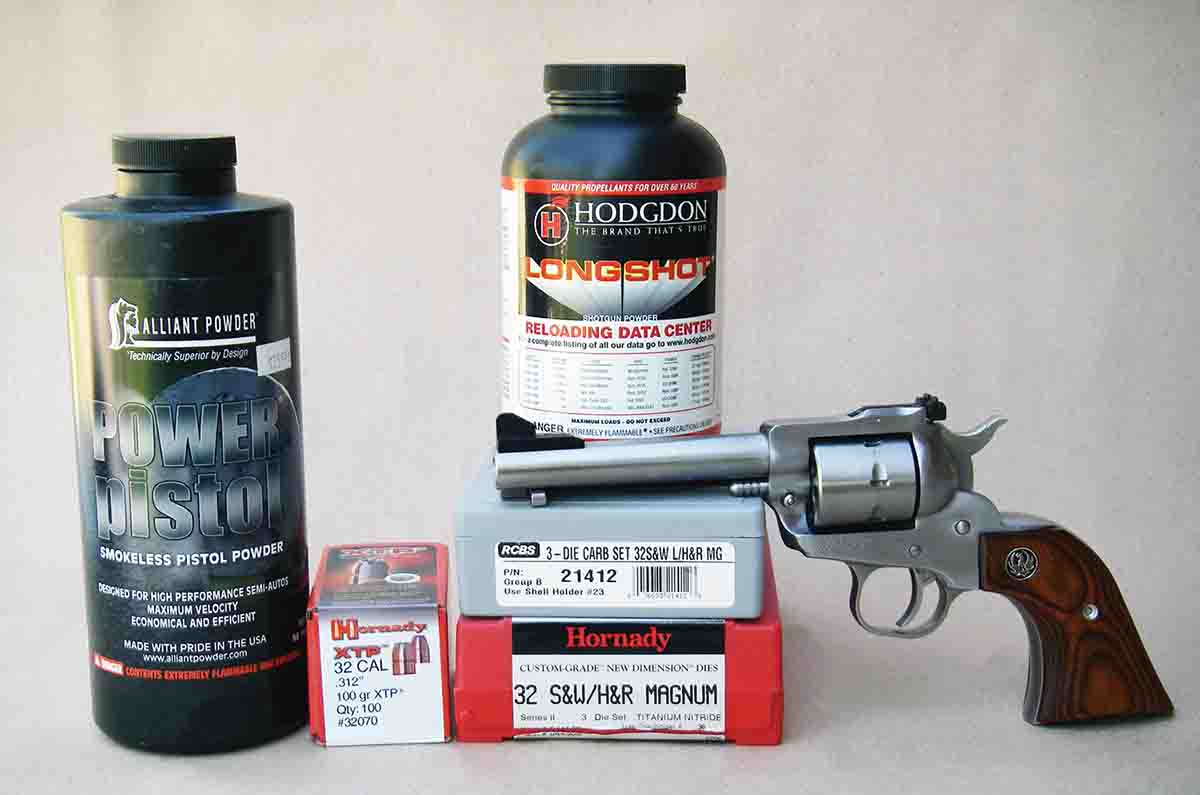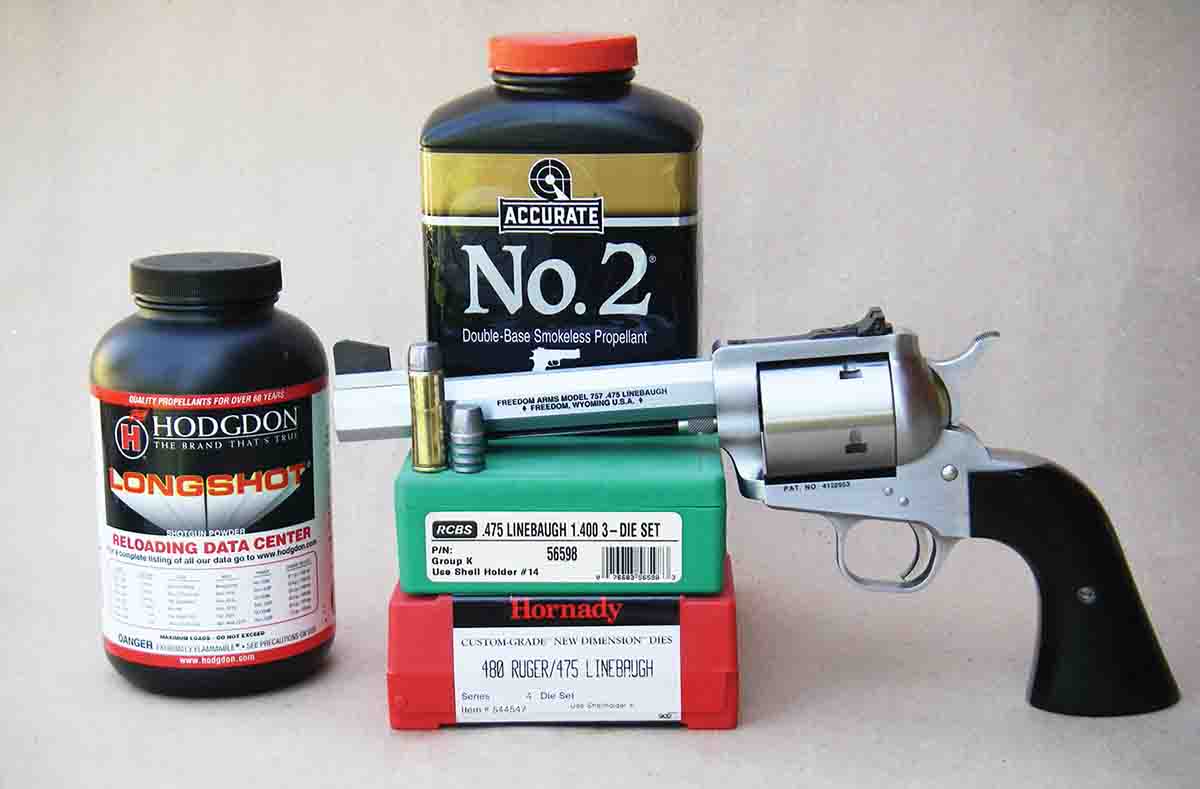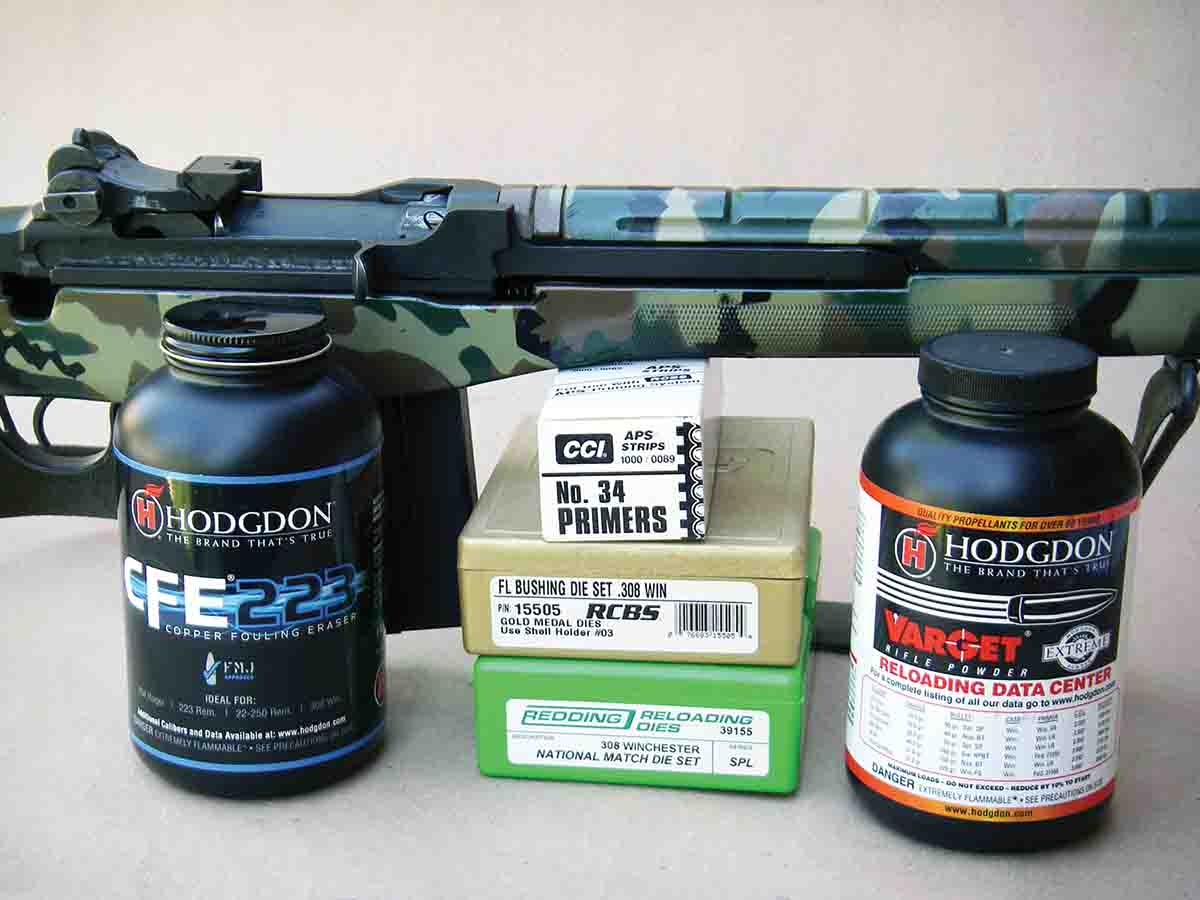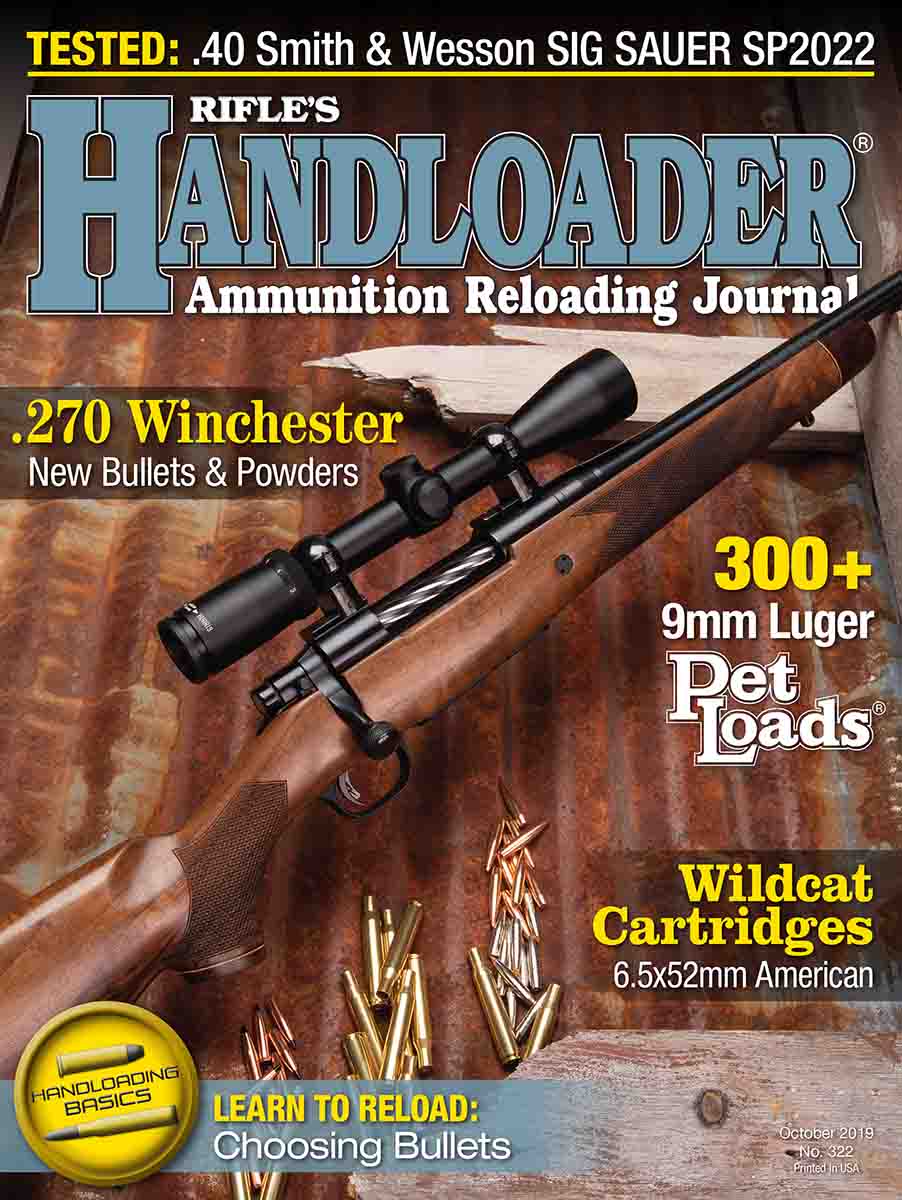Bullets & Brass
.327 Federal Magnum Stuck Case Issues
column By: Brian Pearce | October, 19

I contacted the guys at Sierra (because you can actually get a live person to talk to there) and they suggested that I go to a non-small rifle primer. So I switched to CCI 550 small pistol Magnum primers and reduced the powder charge to 5.3 grains. The problem is not as severe, but cases still stick around 50 percent of the time.
In discussing the matter with RCBS, they suggested to look at the carbide ring to see if it is possibly cracked. It is not and neither are cases showing any signs of scratching or damage.
I reload for several other pistol and revolver calibers including standard and magnum rounds and this is the only one that I am having a problem with. I have searched the Internet for answers and have found others with similar problems, but no one seems to have any answers or solutions. I have 30 years experience as a Phoenix, Arizona, police officer and now that I am retired would rather spend my time shooting instead of tuning my malfunction drills! The .327 is a great round, but I would like to make it work correctly in my guns. Thank you for any solutions that you might offer. – S.B., e-mail
A: As I studied your letter, several possible issues come to mind. For clarification, your load is within pressure guidelines, with 5.8 grains of Winchester 231 powder generally considered maximum with the Hornady 100-grain HP-XTP bullet (capped with a small rifle primer). However, Hodgdon lists maximum at 5.4 grains for 39,800 psi, which is below the industry established maximum average pressure established at 45,000 psi.
You could be experiencing powder position sensitivity where pressures are increased when the powder is resting in the back of the case, but this can even happen with some powders when resting forward, or on the base of the bullet, when ignited. With that said, maximum loads with fast-burning powders such as 231 are never a great idea in magnum cases, especially when they have comparatively long powder columns such as the .327.
You do not provide any velocities produced by your handloads, which is always helpful to help pinpoint the problem. It is possible that your scale is off. I suggest using a weight check set (available from most scale manufacturers, including Lyman) to determine the accuracy of your scale.
Even though the .327 Federal Magnum case is essentially a lengthened .32 H&R Magnum case, it was strengthened by increasing the thickness in the web and case walls, requires a different brass formula and is heat-treated to increase strength to allow it to withstand the increased pressures. It is possible that your batch of brass was not heat-treated or perhaps is constructed of the incorrect material (errors can occur in production processes). I suggest trying your loads in a new batch of cases of a different lot number.
If your scale checks out and changing brass does not cure the problem, you might switch to a CCI 500 Small Pistol primer, which will further decrease pressures but still offer plenty of heat to ignite the relatively small powder charges associated with the .327. If that does not work, you might have to lower the charge weight to 5.0 grains.
A better option would be to change powders. I suggest using 6.5 grains of Hodgdon Longshot or 7.4 grains of Alliant Power Pistol, and be certain to use CCI 500 primers.
I receive a considerable number of questions regarding problems with handloading the .327 Federal Magnum. It does take a bit more finesse to make it work properly, but with load development it will work fine.
I hope my comments are helpful and that your next trip to the range results in no time spent clearing “malfunction” issues and more time shooting.
.475 Linebaugh Reduced Loads

Now my question: Three years ago I acquired a Freedom Arms Model 83 chambered in .475 Linebaugh with 4¾-inch barrel. I have been shooting this gun with 380- grain WFN GC bullets sized to .475 inch and cast with a 22 BHN over 25.5 grains of Hodgdon H-110 powder and Winchester Large Pistol primers, assembled in Starline or Hornady cases. This load shoots very well and produces minimal barrel leading.
I am 71 years old and due to the heavy recoil I can only handle 10 or 15 rounds in a single shooting session. I would like to switch bullets to the Montana Bullet Works 420 grain WLN GC or their 400-grain WFN GC with a BHN hardness of 15. Initial experiments in developing reduced loads using my original 380-grain WFN GC bullet, 14.5 grains of Hodgdon HS-6 with Winchester WLP primer resulted in leading in the chamber throats and barrel, which is very hard to remove. I think that the bullets are too hard with too little pressure. I would like to stay with HS-6 or Blue Dot powders, but will follow your recommendations and purchase whatever powder you think will work best. Using either of the above mentioned 400 or 420 grain Montana Bullet Works bullets, I would like the velocity to be between 1,000 to 1,100 fps. I would like a more pleasant load that is accurate, as I really like this revolver. Thanks in advance for your help. – D.W., White Plains MD
A: I believe switching to cast bullets with the softer 15 Brinell hardness number will probably help solve part of your leading problem when using reduced loads. I also suggest switching to bullets sized to .476 inch, which will offer a better seal in the throats and bore and help prevent fusion (which is probably causing the leading in your chamber throats).
While I can offer data with Hodgdon HS-6 and Alliant Blue Dot powders, neither are top choices in this application, with the latter often producing leading in big-bore sixguns.
Rather, I suggest using 11.0 grains of Hodgdon Longshot powder with either the 400- or 420-grain bullets that you mention, which averaged 999 fps in my Freedom Arms Model 757 .475 Linebaugh with a 6-inch barrel (the first one produced) with a 420-grain LBT WFN plainbase bullet. Bumping the charge to 12.5 grains increased the velocity to 1,069 fps. While there are always traces of lead when firing cast bullets, neither load produced any harmful barrel leading. Another good load option includes 10.0 grains of Accurate No. 2 powder for 961 fps, and 11.5 grains reached your targeted velocity of 1,058 fps. Neither of the above powders are position sensitive, which is important with reduced loads in a large case. Extreme velocity spreads were low and accuracy was excellent. CCI 350 Large Pistol Magnum primers were used to assure uniform ignition in Starline cases. Thank you for your kind remarks, and I would like to know if the above loads work for you.
7.62x51 Load Tuning

The problem is, I can find all sorts of data for the .308 Winchester using these components, but they have been tested in a bolt action rifle or a Universal Receiver. I don’t want to damage my M1A, so I’m a bit leery of some of the powder loads suggested.
This rifle shoots magnificently using the above components, but with 42.6 grains of IMR-4895 powder. But my standard deviations aren’t great, and vertical dispersion beyond 400 yards is a problem. At ranges of 300 yards or less, the rifle will maintain 1.6 MOA or better (using only iron sights).
My goal is to switch to CFE 223 powder and achieve much better powder charge uniformity without having to weigh each charge. I have experience using CFE 223 powder in the .223 Remington and 5.56, which works very well. I just have no experience using it in the 7.62x51mm/.308 Winchester and would like some guidance.
I am an avid reader of yours and the rest of the editorial staff and Handloader magazine. I feel that you perform a very real and necessary service to the shooting public. I will remain a subscriber for life. I thank you humbly in advance for any insight you can provide. In continued American liberty and freedom. – C.T., Lancaster PA
A: Thanks for taking the time to write and for your kind remarks. Your current 7.62x51mm load is generally considered a good load. You don’t specify what your standard deviations are, but you indicate that they “aren’t great.” Nonetheless, your “vertical dispersion” might be due to barrel bedding, or the need to tune your load slightly by changing the powder charge by decreasing or increasing .5 grain. You might try both loads and see if it corrects the problem.
I am unaware of any lab tested data using CFE 223 powder that is intended for the M1A rifles. I even contacted Ron Rieber, the head ballistician at Hodgdon, and discussed your question at length. We both agreed that you can probably make CFE 223 work, but there are better choices. He would not offer suggested data; however, by my estimates you will probably find a suitable load using 49.0 to 50.0 grains with the Hornady 150-grain FMJ-BT bullet. This load should not damage your rifle’s operating rod.
I might further suggest that you switch to Hodgdon Varget powder, which is probably the most match-winning powder in the .308 Winchester/7.62x51mm NATO. When using an extruded powder for match competition, there is usually an accuracy advantage in weighing each powder charge. However, if you want to throw charges, I suggest obtaining a benchrest-type powder measure, with excellent products available from Redding and Hornady. Try using 41.0-, 42.0- and 43.0-grain charge weights and select the one that gives the best accuracy in your rifle.
There is one concern with your current load recipe and includes the Winchester Large Rifle primer, which is designed for use in various sporting rifles. To prevent dangerous slam fires in the M1A rifle, you really should be using CCI No. 34 primers, which are mil-spec (with thicker cups) and will prevent a possible mishap. Keep in mind that these are magnum primers and can increase pressure over loads assembled using a standard large rifle primer. I hope this information helps.


